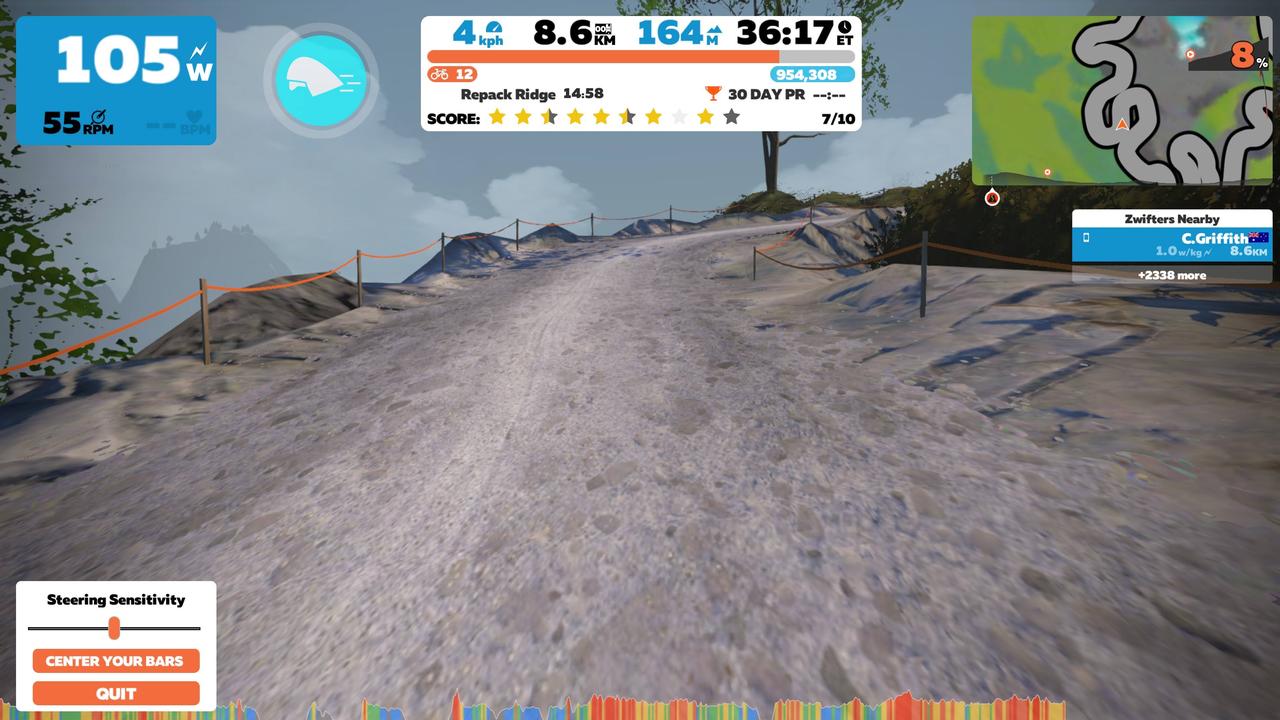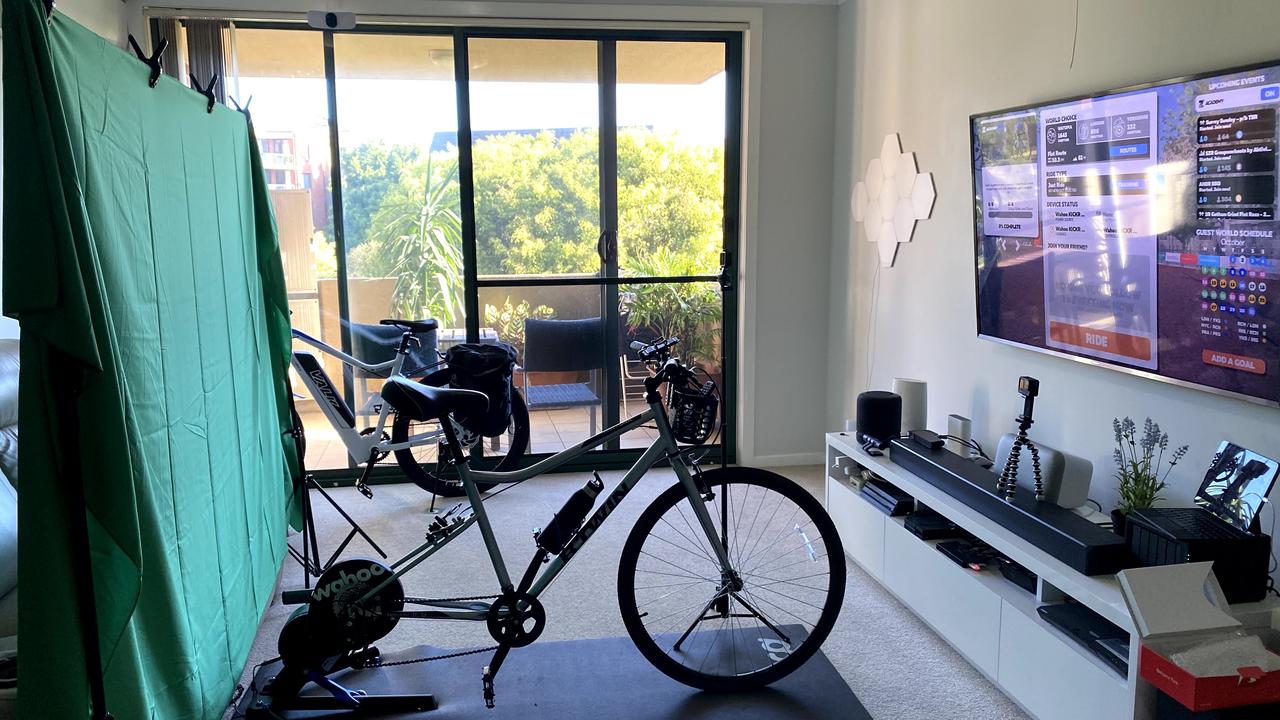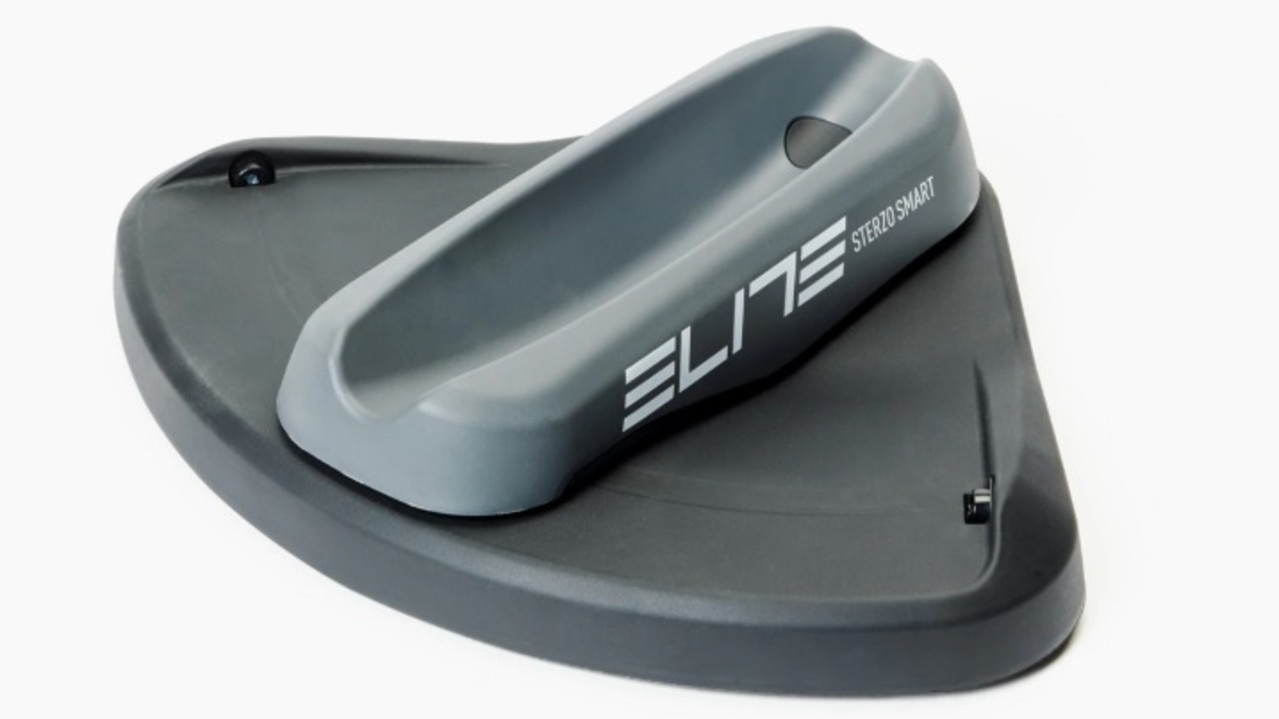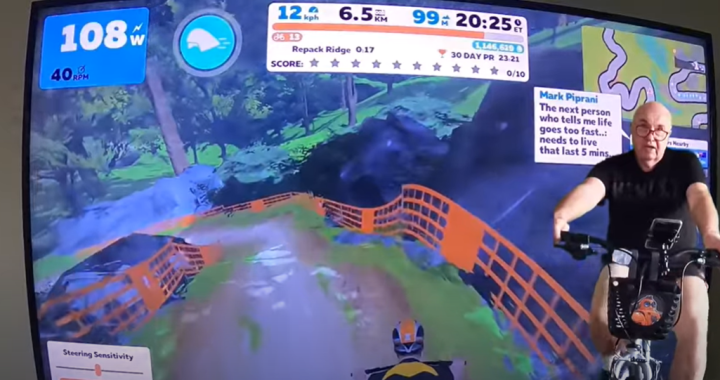I’m hurtling across a narrow, winding bridge, frantically steering a speeding pushbike that doesn’t have brakes. I’m cornering on the outside of curves as if I’m in a Grand Prix.
My only defence against being thrown off the edge into a valley below, with serious injury, is my steering dexterity. The speed is dangerously fast and I’m on a real bike.
Welcome to the world of a daredevil form of cycling where you steer your real bike in a virtual world.
You can exercise in its depictions of New York, Richmond Virginia, London, Yorkshire, Innsbruck Austria, Paris, regional France and Zwift’s own mythical world Watopia, complete with rides along underground glass tunnels, across bridges of flowing lava, up steep mountain ranges and through Jurassic forests with feeding dinosaurs and menacing prehistoric birds.

It’s not all just exotic tourism. You get an awful lot of exercise with these experiences. And it’s social. Zwift has training regimes, meets and competitions; your cycling buddy next to you might be riding in a loungeroom on the other side of the world.
READ MORE: From cabin fever to cabin beaver | Zwift snags massive $615m investment | Tour de France goes virtual
My own encounter with Zwift was its value as a safety valve during the coronavirus lockdown this year. Not only could I keep reasonably fit, psychologically it helped with those anxious feelings of being trapped indoors. It was a daily escape and I still indulge; I am grateful for what it delivered. And so it seems are many others with Zwift last month announcing $615m in series C investment.
Zwift does face competition in a virtual cycling space that continues to catch on. At this stage it doesn’t produce hardware, only the riding experience. To ride Zwift, you get a regular bike, remove the back wheel and attach a third party Bluetooth connected trainer such as a Wahoo-Kickr or Tacx Trainer.
The trainer connects to the Zwift app running on your computer or mobile device, takes you across its worlds and adjusts the bike’s behaviour so that it is really tough to ride uphill with your bike thundering downhill. I have been using an Apple TV box connected to a smart TV to drive the app. During training sessions, you run a second “companion app” on your smartphone usually attached to the handle bars to view a map of where you are, to text friends, to take virtual photos and control bike functions.

At various intersections, you can use the smartphone app to signal if you want to turn off, but steering as such didn’t exist.
Zwift decided to introduce steering in a clever way. It introduced an off-road experience called Repack Ridge where the Zwift system would read data from the sensors of the phone propped on the handlebars to determine steering movement.
Repack Ridge is not an easy place to get to. You have to ride about six kilometres across bridges and islands to enter an area called Titans Grove to get to the track. Steering is activated once you are on the track.
Repack Ridge is challenging riding not just because of the never ending climbs, but also because you don’t have brakes. Zwift hasn’t added braking to the repertoire of its features, so if you are hurtling down hills, your life depends on steering. You feel you are in a two-wheel toboggan – it’s frightening.
Zwift has said that Repack Ridge is an experiment. That seems to be the case now, with Zwift adopting a different steering system where you place a turntable-like device under the front wheel which monitors your steering.
The device, known as the Elite Sterzo smart steering plate, is available from Zwift online but also sells for around $60 online in Australia, but shop around. The Sterzo connects to the Zwift system using Bluetooth Low Energy. It can connect to devices by ANT too, but Zwift says this isn’t supported. The Sterzo is battery operated, taking three AAA batteries which Sterzo claims to offer 600 operation hours.

Zwift lets you connect the Sterzo to your phone and the companion app if your computer driving the Zwift experience does not support Bluetooth Low Energy.
Zwift says it is going to experiment more with steering. “Many smart bikes include steering buttons. For those of you with smart bikes, those capabilities are planned for support at a later date,” Zwift says in a post.
So what else would be next? Braking? Probably not. Despite the many near-death experiences you have during your virtual Zwift rides, the reality is you can’t be hurt, unless you are so shocked that you fall off your bike and break your arm. You never crash into another’s Zwift bike, you literally go through them. (Many people have gone directly through me and I never felt a thing.) So I can’t see demand for brakes.
With its new investment moneys, Zwift would not only be adding new biking worlds and experiences; there’s the belief it will sell its own biking hardware. It’s a market that is proving lucrative in the US for American firm Peloton, so it’s hard to see Zwift resisting being part of the action.
Zwift was around before the pandemic; it was formed in 2014. Coronavirus has given it and its competitors a huge boost in business and the company is taking that momentum before it.
Published in The Australian newspaper.
